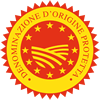Description
The Huile d'Olive de Haute-Provence PDO is extravirgin olive oil obtained mostly from the Aglandau olive tree, which must be in the olive groves in a percentage of minimum 80% (a lower percentage of 70% is allowed until 2014). For the rest, secondary varieties can be used, as Bouteillan, Picholine, Tanche, Boube, Colombale, Estoublaisse, Filaire, Grappier, Rosée du Mont d'Or.
Production Area
The production area of Huile d'Olive de Haute-Provence PDO is situated in the medium valley of Durance. It covers 82 municipal areas of the Alpesde-Haute-Provence department, three municipal areas of the Bouches-du-Rhône department, four municipal areas of the Var department and six municipal areas of the Vaucluse department in the Provence-Alpes-Azur region.
Production Method
The olives used for the production, once picked up, can be stored in the mills for maximum six days. Processing can be mechanically or physically made, cold at a maximum temperature of 30°C to separate the oils of the first extraction avoiding that heat could change the organoleptic values of the final product compromising its quality.
Appearance and Flavour
Huile d'Olive de Haute-Provence PDO is yellow colour with green reflections. The taste is strong with green apple, ripe apple, artichoke and cut hay notes. Its consistency is fine, velvety, piquant and slightly bitter with butter and hazelnut notes.
History
The history of Huile d'Olive de Haute-Provence PDO is the result of a long tradition. Indeed, in the 16th century, olive orchards developed in Haute-Provence with an extension, both in terms of altitude and longitude, up to the levels of Sisteron in the 18th century. The big chills registered in the period between 1796 and 1799 brought to the regionalisation of the olive tree, which was more suitable for the meso-climatic needs and a natural selection of the most resistant types like Aglandau in Haute-Provence and, finally, to the generalisation of shearing.
Gastronomy
The olive oil is a non-durable food which needs a right conservation to maintain its organoleptic features. So, it must be conserved in fresh rooms protected from the light, at a temperature between 14°C and 18°C, far from heat sources and from products releasing odours. In addition, it must be consumed within four-six months from pressing to taste it when its flavour is at the top. It is suggested to taste Huile d'Olive de Haute-Provence PDO when raw to appreciate its flavour and fruity scents. A low-temperature cooking is suggested to maintain all the olive oil features when preparing warm dishes. Huile d'Olive de Haute-Provence PDO is ideal to season salads, sauces, grilled vegetables or simply on a tasty slice of bread. It is also used to prepare the tapenade, a local Provencal recipe made with olives, capers and anchovies.
Marketing
The product is sold as Huile d'Olive de Haute-Provence PDO. It is marketed packed in glass or metal sheet containers.
Distinctive Features
The fruity taste of Huile d'Olive de Haute-Provence PDO is due to the peculiar characteristics of the ground, which is perfect for the traditional cultivation of a noble type of olive tree, the Aglandau.






